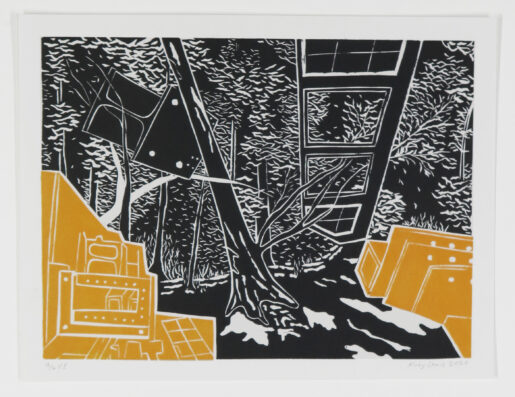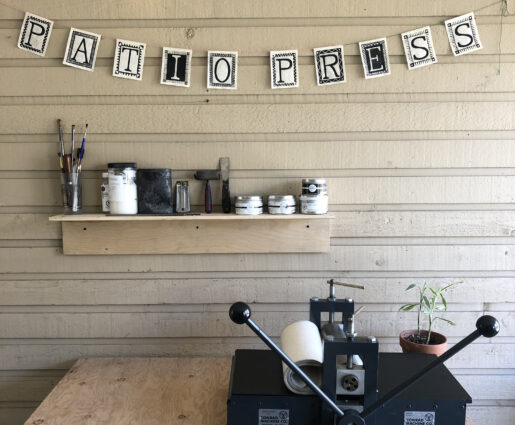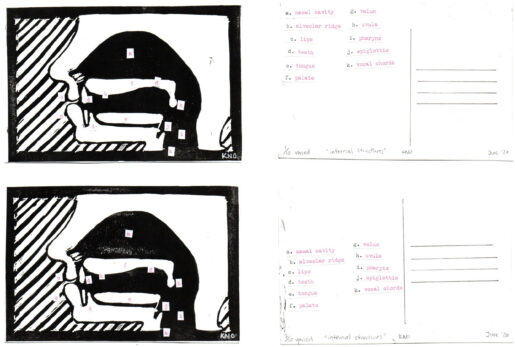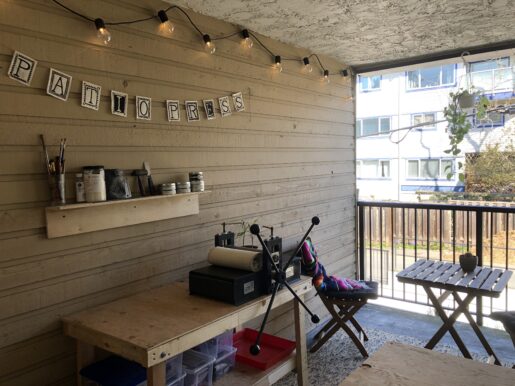Printmaking Project Uncovers Histories Hidden in Discarded Objects
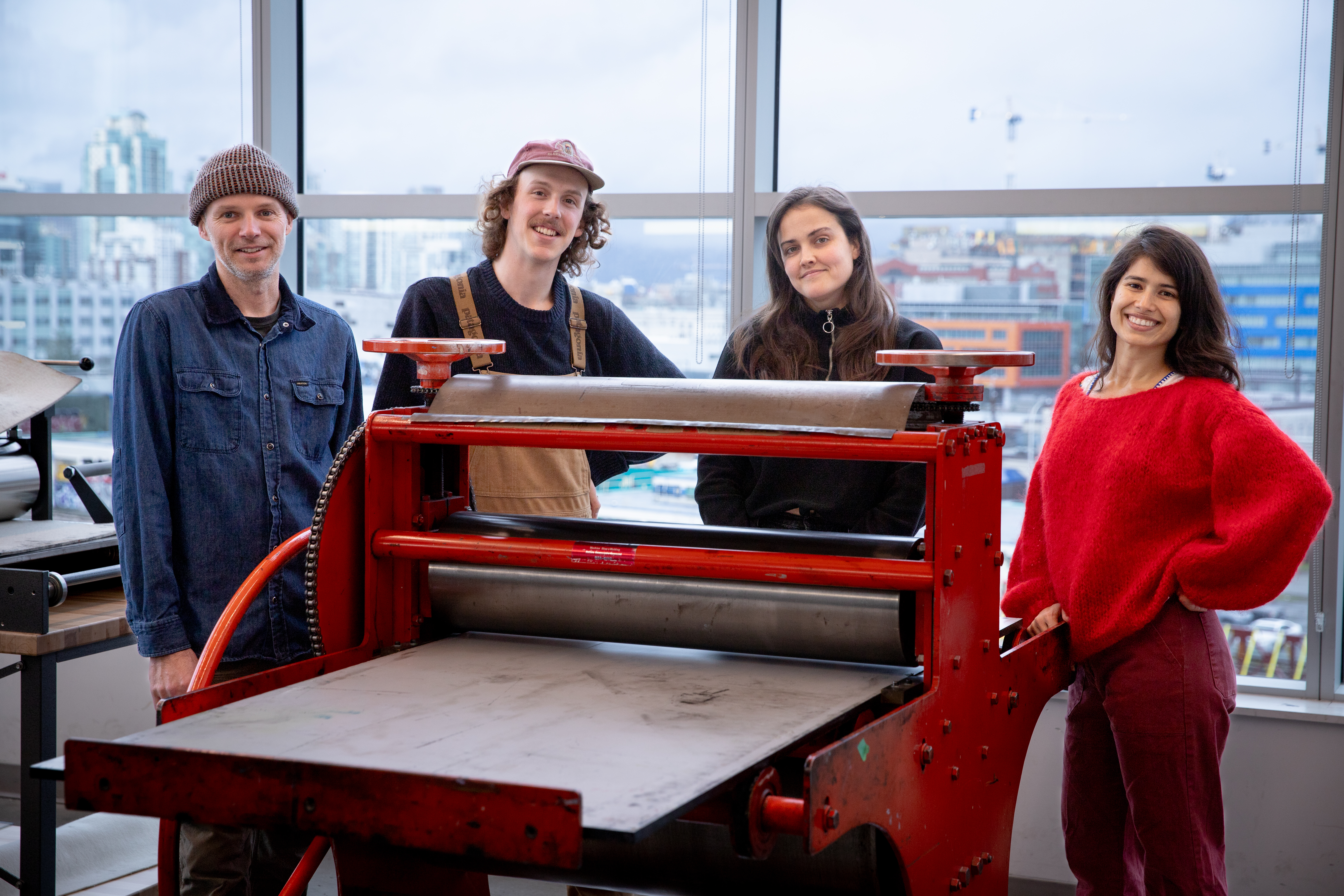
(From L): Mark Johnsen, Will Price, Sara-Jeanne Bourget and Mira Louise D'Souza gather around the Glen Alps press in the printmaking studio at Emily Carr University. (Photo by Perrin Grauer)
Posted on | Updated
Alongside ECU students Mira Louise D’Souza and Will Price, faculty artists Sara-Jeanne Bourget and Mark Johnsen explore how experimental printmaking practices can reveal the stories concealed in forgotten materials.
A recent research project at ECU explored how experimental, collaborative printmaking techniques might be used to create a graphic record of campus activity.
Led by artists and ECU faculty members Sara-Jeanne Bourget and Mark Johnsen, the SSHRC-funded project also included student artist-collaborators Mira Louise D’Souza and Will Price.
“We wanted to reuse as much as possible and purchase as little as possible,” Mark says. “It was mostly centred around the experimental process of exploring whether we could run a 30-foot-long print through the press.”
Over six months, the team printed various discarded items collected from across campus. Gloves, broken vinyl records and a wide range of textured papers, fabric scraps and used classroom supplies were among the dozens of items they inked and printed.
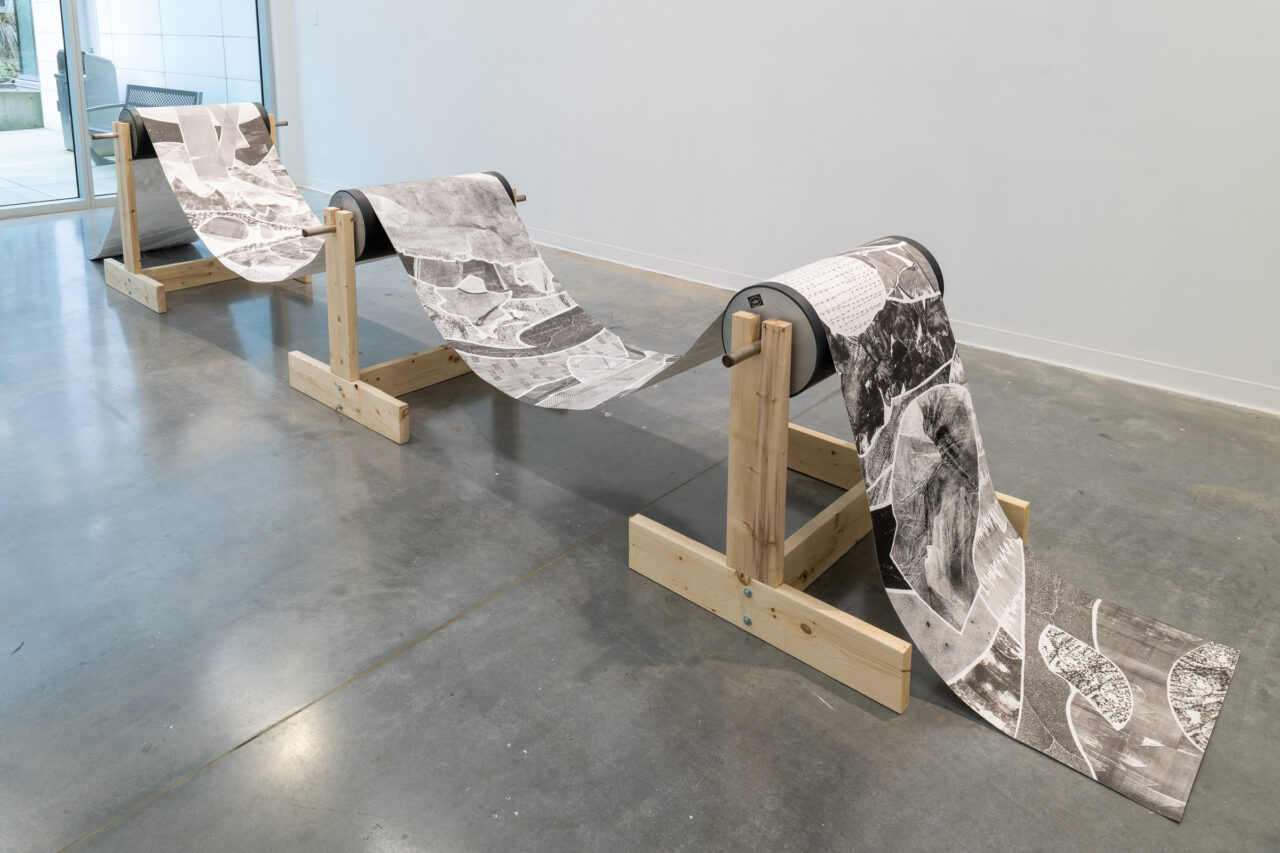
The project was largely centred around exploring the possibility of producing a 30-foot long print which would serve as a graphic record of campus happenings. Disused and end-of-life printmaking tools were employed as display apparatuses during the project exhibition. (Photo by Michael Love)
The team used abandoned file folders for early tests, and all offcuts from the final print were saved and shown in the project exhibition in February.
Titled Piling/Upon, the show documented the team’s exploration of how new value can be uncovered in materials often regarded as worthless, which included employing disused and end-of-life printmaking tools as exhibition apparatuses.
The project overturns the assumption that new, expensive materials inherently have more value. It also spotlights how discarded objects tell stories about places, people and processes.
Sara-Jeanne and Mark wanted to bring a similar thoughtful disruption to their team’s dynamics.
“We framed the project partly around collaboration and the idea of blurring authorship,” Sara-Jeanne says. “Yes, we mentored the students during the project, but the end goal was that there’s no one author for any one part. Everything is the four of us.”
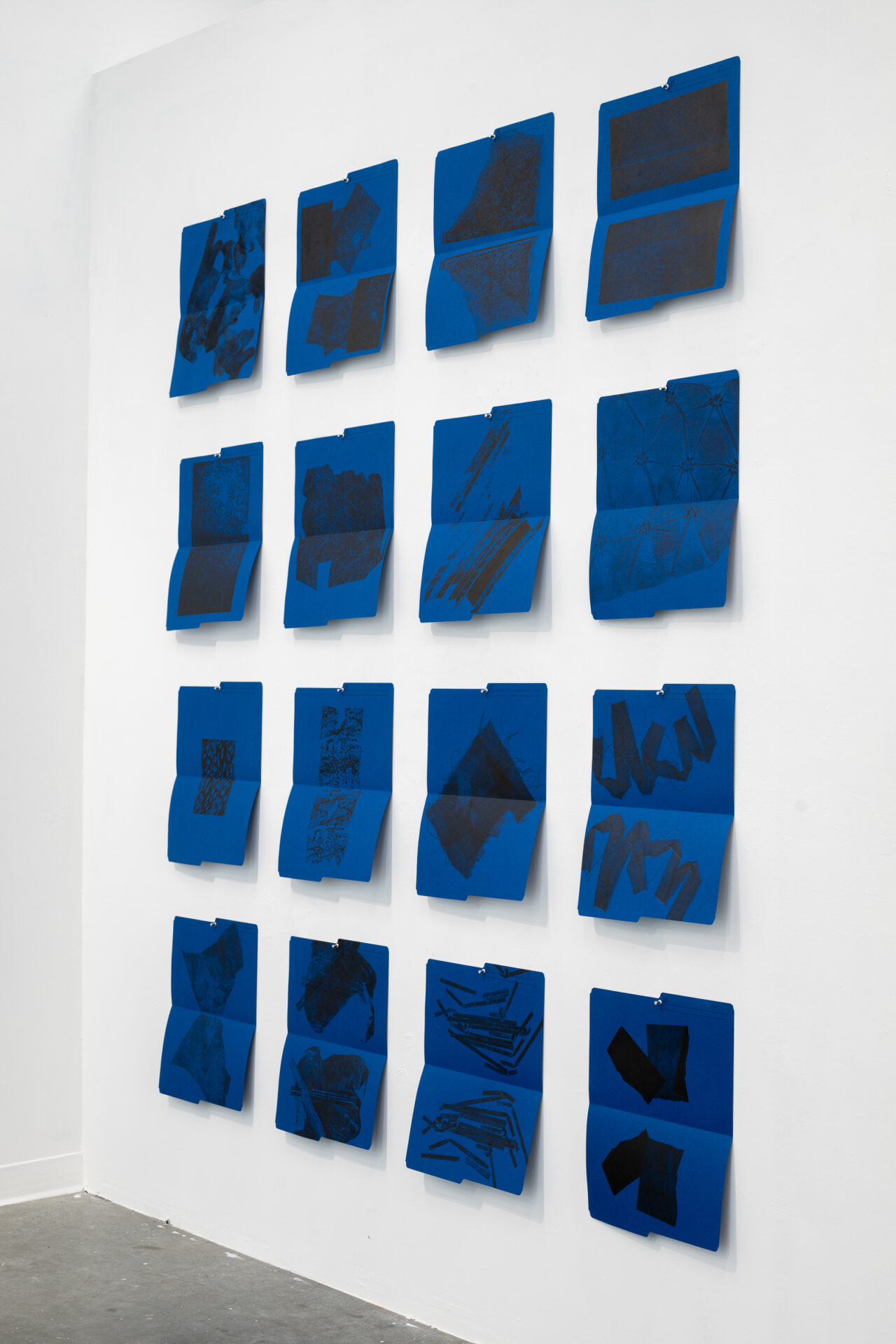
The team used abandoned file folders for early tests and print registration. (Photo by Michael Love)
Both Mira and Will, who are students at Emily Carr, say this approach was transformative.
“The project took me from a more naive place where all art is composition — you’re sitting and focusing and creating something from your own being — to looking at it as a more complex conversation with your surroundings, with materials and with other people,” Will says. “Artists are really just mediators. To me, that’s a natural recognition of what’s happening in an artistic process.”
Both students say the project represented their first experience working with faculty as peers rather than junior contributors. That equity was grounded in a lighthearted, work-first mentality emphasizing group decision-making and collective discovery. Even the physical act of creating the 30-foot print required all four team members to work in unison on the storied Glen Alps press.
“It was a very joyful exchange,” Mira says. “Sometimes, working by yourself, you can get in your head about what you’re making, but this was the opposite of that. It was a celebration every time we made a print, which I had never experienced before. I now feel that same thing in my practice and in my classes. I carry it with me. It’s a big gift.”
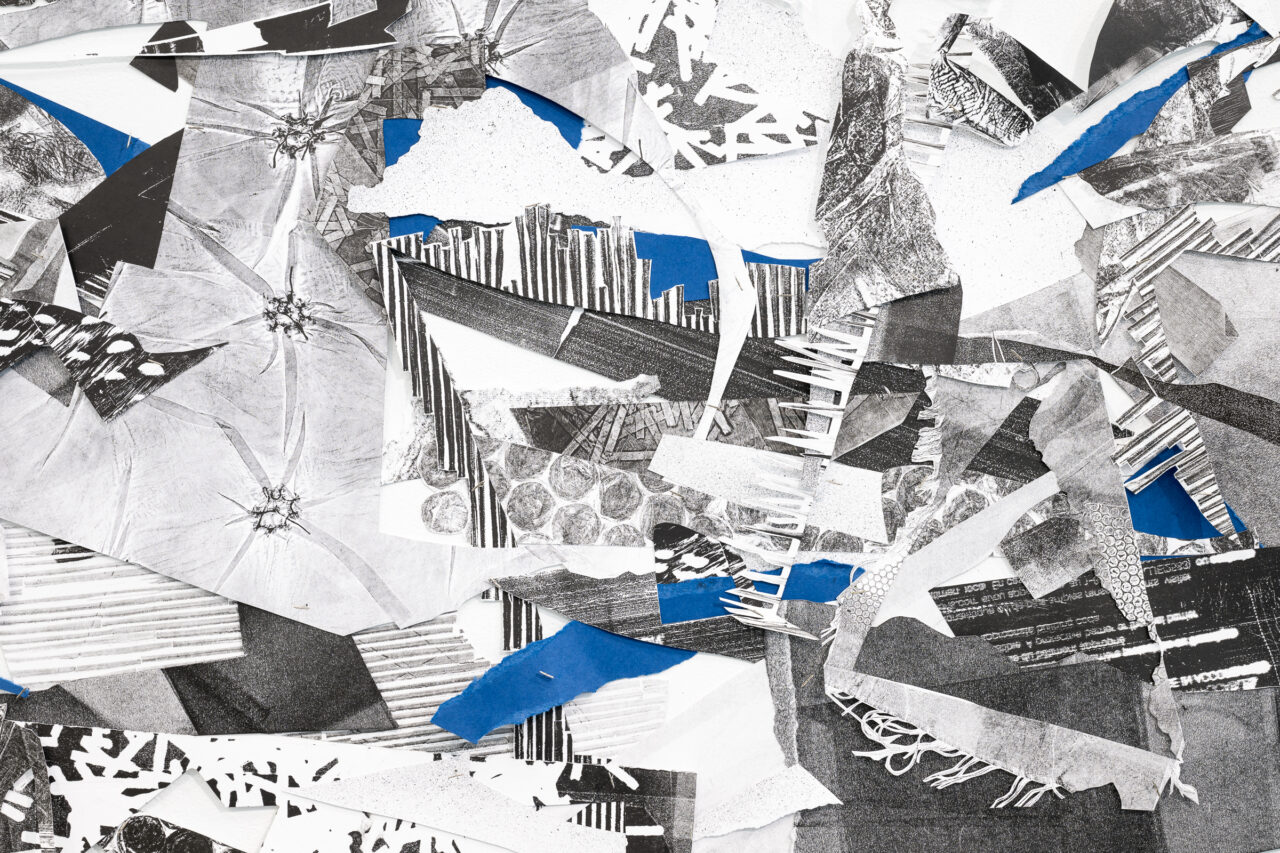
All offcuts from the final print were saved and shown in the project exhibition in February. (Photo by Michael Love)
Using discarded objects also raises the notion of unknown collaborators, Mira adds. By leaving items behind, some students unintentionally contributed to the work in Piling/Upon.
Marks says this openness is a value he and Sara-Jeanne work intentionally to bring to their students and personal artistic practices more broadly.
“It’s really about iteration — how, with each run through the press, with each new mark, a new form emerges and then we respond to that,” Marks says. “You change your relationship with your own art when you’re responding to that history.”
Piling/Upon was funded by a Social Sciences and Humanities Research Council (SSHRC) Seed Grant.
Learn more about Sara-Jeanne and Mark’s Patio Press collaborative printmaking initiative via their website and Instagram.
Visit ECU online to learn more about studying Print Media at Emily Carr.
